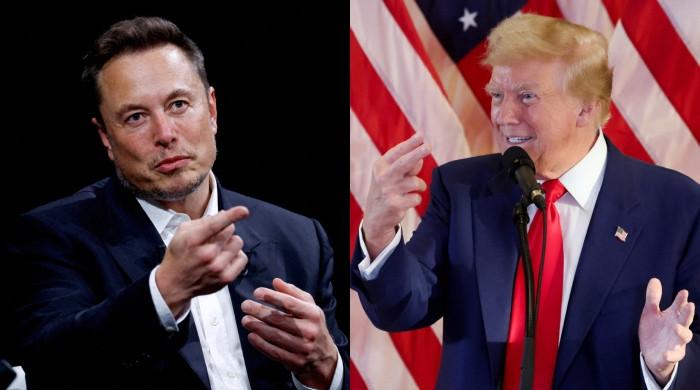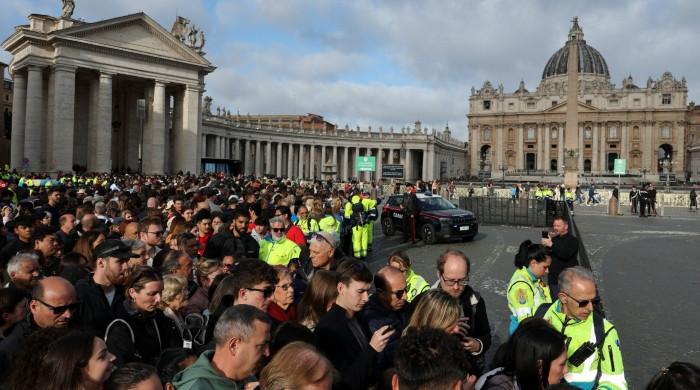When former President Trump accepted the Republican presidential nomination, he laid out his vision for governing the country. He painted a bleak picture of the state of the United States and outlined a series of measures he planned to take.
But his comments Thursday night were marred by a slew of false and misleading information that distorted the facts about immigration, the U.S. economy and his past accomplishments.
Here are the facts:
Immigration
TRUMP: “The greatest invasion in history is taking place right here in our country. They are coming from every corner of the Earth, not just South America, but Africa, Asia, and the Middle East. They are coming from everywhere, and this administration is doing nothing to stop them. They are coming from prisons and jails, from mental institutions and asylums, and from terrorists in numbers never seen before.”
THE FACTS: Trump devoted much of his speech to talking about immigration and the massive influx of migrants into the United States, repeating several false and misleading claims, including that it has caused a rise in crime. As evidence, he cited recent high-profile, heinous crimes allegedly committed by people in the country illegally.
But the suggestion that there has been a rise in violent crime nationwide as a result of the influx is not supported by the facts.
FBI statistics do not break down crimes by the offender's immigration status, nor is there evidence of an increase in crimes committed by migrants, either along the U.S.-Mexico border or in cities with a higher influx of migrants, such as New York. In fact, national statistics show that violent crime is declining.
Studies have shown that people living in the country illegally are less likely than native-born Americans to be arrested for violent, drug-related and property crimes. A 2020 study published by the National Academy of Sciences found “significantly lower felony arrest rates” among people in the United States illegally than among legal immigrants or native-born citizens.
There is also no evidence to support that other countries are sending their murderers, drug dealers and other criminals to the United States.
Economy
TRUMP: “We had the greatest economy in the history of the world.”
THE FACTS: That's far from accurate. The COVID-19 pandemic triggered a massive recession during his presidency. The government borrowed $3.1 trillion in 2020 to stabilize the economy, and Trump left the White House with fewer jobs than when he entered.
But even if you strip out the problems caused by the pandemic, economic growth averaged 2.67% during Trump’s first three years, which is pretty solid. But it’s nowhere near the 4% average during Bill Clinton’s two terms, from 1993 to 2001, according to the Bureau of Economic Analysis. In fact, growth has so far been stronger under President Biden than under Trump.
Trump managed to get the unemployment rate down to 3.5% before the pandemic, but the labor force participation rate for people aged 25 to 54 (the core of the American working population) was higher under Clinton. The participation rate has also been higher under Biden than under Trump.
Afghanistan
Trump on US troop withdrawal from Afghanistan: “We also left behind $85 billion worth of military equipment”
THE FACTS: Those figures are significantly inflated, according to reports from the Special Inspector General for Afghanistan Reconstruction, or SIGAR, which oversees U.S. taxpayer money spent on the conflict.
The $85 billion figure is similar to a figure in a July 30 quarterly report from SIGAR, which said the United States has spent about $83 billion to build, train and equip Afghan security forces since 2001.
However, that funding included payment for troops, training, operations and infrastructure along with equipment and transportation for two decades, according to reports by SIGAR and Dan Grazier, a defense policy analyst with the Project on Government Oversight.
“We spent over $80 billion in assistance to Afghan security forces,” Grazier told the AP in August 2021. “But it’s not just about equipment costs.”
In fact, only about $18 billion of that sum went to equip Afghan forces between 2002 and 2018, a June 2019 SIGAR report showed.
Another estimate from a 2017 Government Accountability Office report found that about 29 percent of dollars spent on Afghan security forces between 2005 and 2016 went to fund equipment and transportation. Transportation funding included equipment, contracted pilots and aircraft to ferry officials to meetings.
If that percentage were maintained over the entire two-decade period, it would mean the United States has spent about $24 billion on equipment and transportation for Afghan forces since 2001.
But even if that were true, much of the military equipment would become obsolete after years of use, according to Grazier. In addition, U.S. troops had already discarded unwanted equipment and, before the withdrawal, had disabled dozens of Humvees and aircraft so they could not be used again, according to Marine Gen. Frank McKenzie, head of U.S. Central Command.
While no one knows the exact value of the U.S.-supplied Afghan equipment the Taliban have seized, Pentagon officials have confirmed it is significant.
Hostages held by Hamas
Trump's Secretary of State MIKE POMPEO on Americans held hostage in the Gaza Strip by Hamas: “President Biden won't even talk about the fact that Americans are still being held there by the Iranian regime.”
THE FACTS: Biden has spoken several times about the Americans who were among the 240 people taken hostage by Hamas on Oct. 7. Eight Americans are reported to remain captive, including three who were killed.
For example, three days after the attack that started the war between Israel and Hamas, Biden said: “We now know that there are American citizens among those detained by Hamas.”
Shortly afterward, on October 20, he said: “As I told the families of the Americans held captive by Hamas, we are seeking every avenue to bring their loved ones home.”
Biden issued a statement on January 14 describing the day as “a devastating and tragic milestone: 100 days of captivity for the more than 100 innocent people, including as many as 6 Americans, still held hostage by Hamas in Gaza.”
More recently, on April 27, she wrote in a post on her official Facebook page: “I will not rest until all hostages, like Abigail, torn from their families and held by Hamas are back in the arms of their loved ones. They have my word. Their families have my word.”












